Key takeaways:
- Understanding the disconnect between vision and audience response is crucial for designers; constant market research and consumer feedback are essential.
- Failures often stem from miscommunication, lack of research, and inadequate resources; addressing these factors can improve project outcomes.
- Embracing feedback, collaboration, and resilience transforms setbacks into opportunities for growth and refinement in design.
- Building confidence involves analyzing failures constructively, stepping out of comfort zones, and using challenges as learning experiences.

Understanding failed design projects
Understanding failed design projects requires a deep dive into the nuances of creativity and execution. I remember a collection I poured my heart into, only to realize that the fabric I chose didn’t resonate with the audience. Have you ever experienced that disconnect between your vision and the final outcome?
Reflecting on those failures often unveils a common thread: miscommunication or misunderstanding of the target market. One time, I designed a piece I thought was cutting-edge, but it completely missed the mark. How could I have misread the trends so drastically? It taught me the importance of constant market research and listening closely to consumer feedback.
Sometimes, a failed project reveals more about us as designers than we care to admit. I learned that vulnerability is part of growth; embracing those moments helps us refine our craft. Doesn’t it feel daunting at times to confront your own design limitations, yet that’s where the real learning begins?
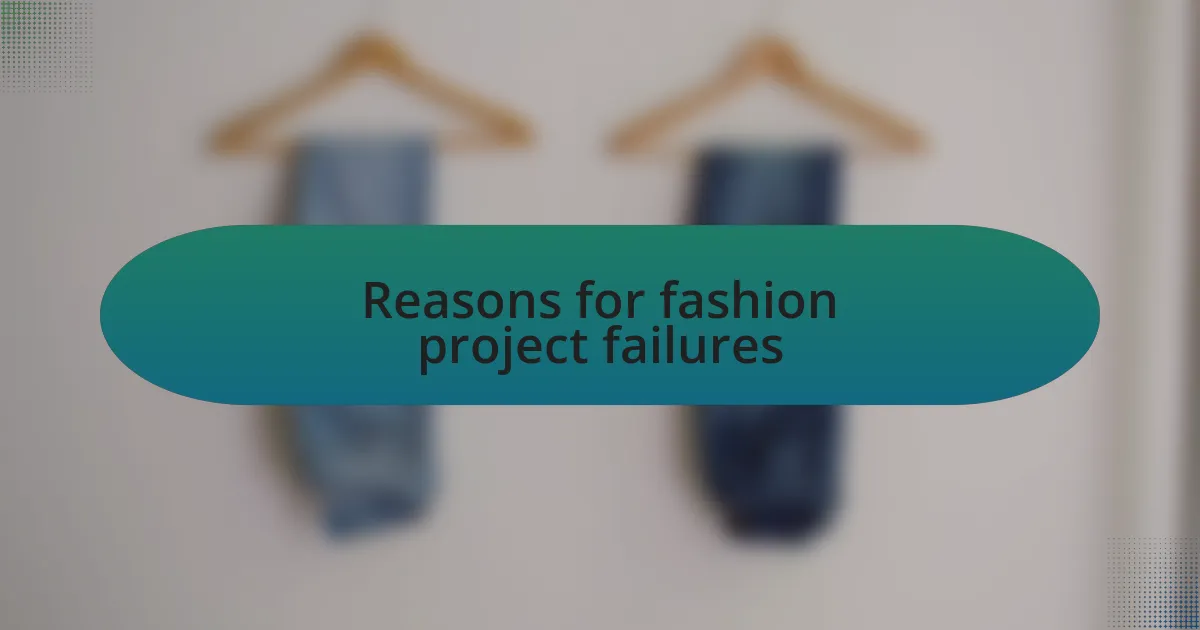
Reasons for fashion project failures
Lack of proper research can be a silent killer in fashion projects. I recall a time when I launched a collection that I was thrilled about, but it became evident that I hadn’t studied the competition. Seeing similar designs in other brands made me question my originality. Have you ever noticed that sometimes the most obvious errors are the ones we overlook?
Resource constraints often play a significant role, too. In one particular project, I underestimated the budget necessary for quality materials. The end result suffered, and I felt disheartened watching my vision collapse due to something as practical as cost. How often do we underestimate the impact of resources on creativity?
Additionally, poor time management can derail even the best ideas. I experienced this firsthand when I rushed a collection for a fashion week deadline. The pressure was immense, and guess what? The final pieces didn’t reflect my true aesthetic. It left me wondering—do we sometimes sacrifice quality for speed without realizing the lasting implications?
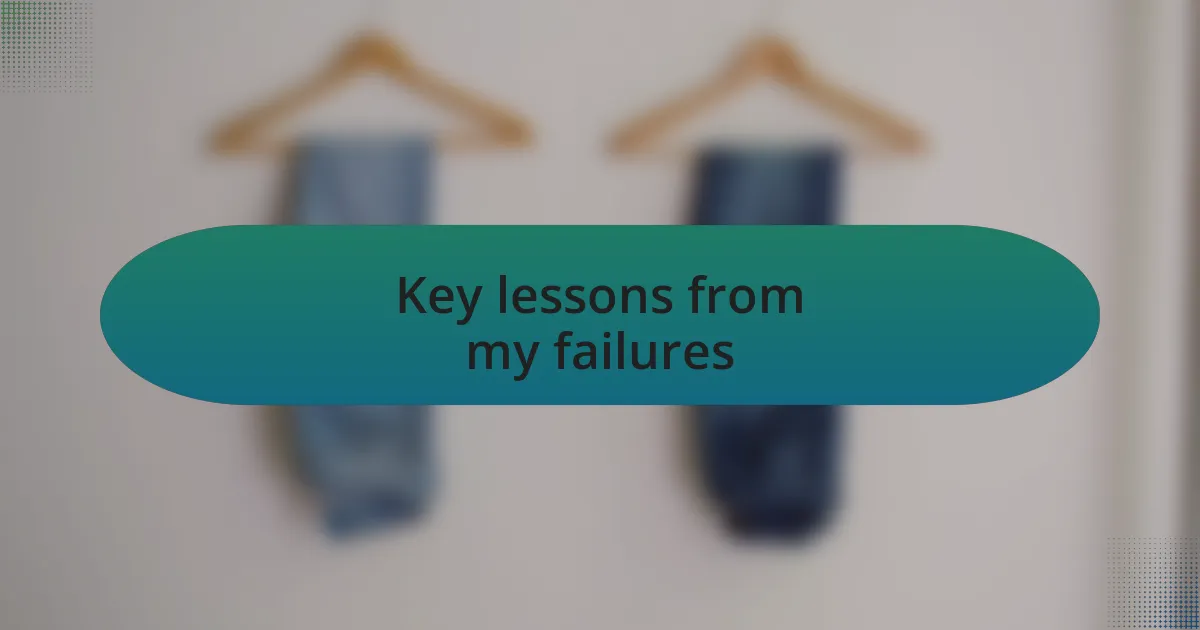
Key lessons from my failures
One key lesson I’ve learned from my failures is the importance of listening to feedback. I remember launching a line that I was passionate about, only to receive lukewarm responses from clients and peers alike. It was a hard hit to my pride, but I realized that ignoring constructive criticism limited my growth. How often do we cling to our vision, blinding ourselves to the input that could truly enhance our work?
I’ve also come to appreciate the value of a solid support network. During one ill-fated collaboration, I tried to juggle everything single-handedly. The stress unfolded like a poorly stitched seam; each minor issue compounded, leading to a total disaster. Reflecting on that experience, I now see the power of collaboration and the insights a diverse team can bring. Do we sometimes underestimate the strength of our collective ideas?
Lastly, I learned that failure can be a powerful teacher in resilience. After a project fell apart due to miscommunication, I felt utterly defeated. However, this setback pushed me to reassess my communication strategies and develop better channels for clarity and transparency. How vital is it to turn our missteps into opportunities for learning and improvement? In my case, very. Each failure has ultimately shaped my design philosophy, reinforcing the notion that growth comes through struggle.
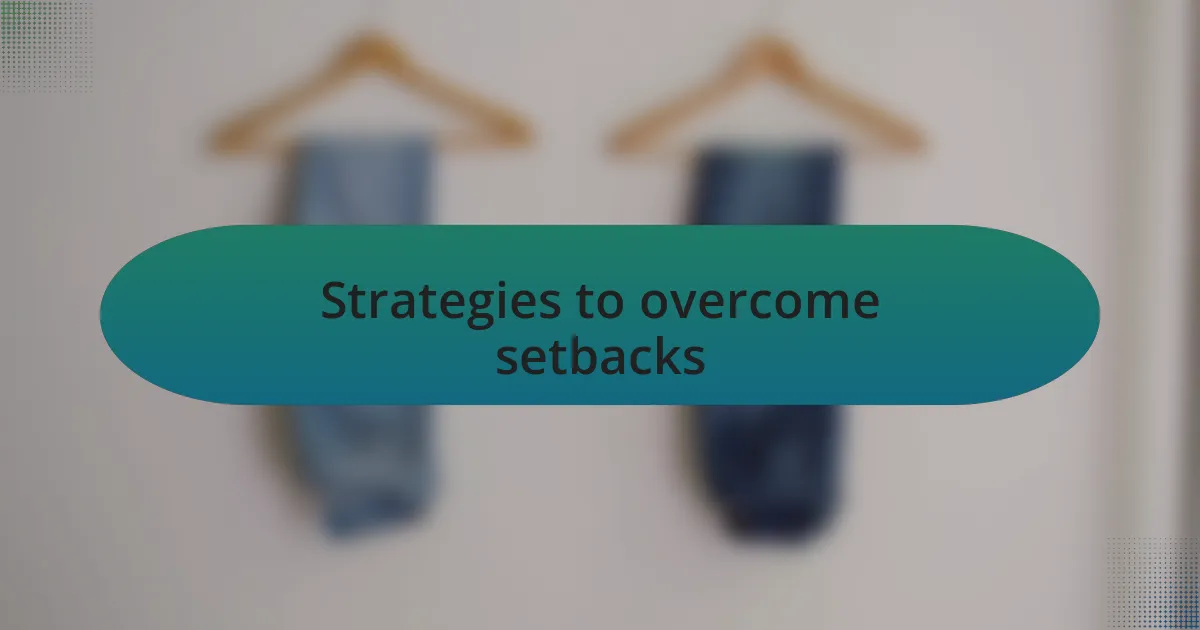
Strategies to overcome setbacks
Identifying the root causes of setbacks is a strategy that has served me well. I vividly remember a project where the fabric I chose didn’t perform as expected. Instead of sulking, I sat down with my team to dissect what went wrong—was it the supplier, the design, or something else? This deep dive not only clarified the issue but laid the groundwork for more informed decisions in the future. How many of us take the time to analyze what truly went wrong rather than just brushing it aside?
Developing a flexible mindset is another essential approach I’ve embraced. Early in my career, I stubbornly held onto designs that weren’t resonating with clients. I realized that adapting to market feedback is pivotal. Embracing change gave me the freedom to experiment with new ideas and revitalize my collections. Have you found that sometimes, the very thing you were hesitant to let go of could open new creative avenues?
Finally, prioritizing self-care has become crucial in overcoming setbacks. I recall a particularly taxing season when my enthusiasm dwindled under the weight of failed launches. I learned that stepping back to recharge—whether through a walk, meditation, or simply a day off—can reinvigorate creativity. Can we truly produce our best work when we’re running on empty? I learned that giving myself permission to pause was just as important as any project deadline.
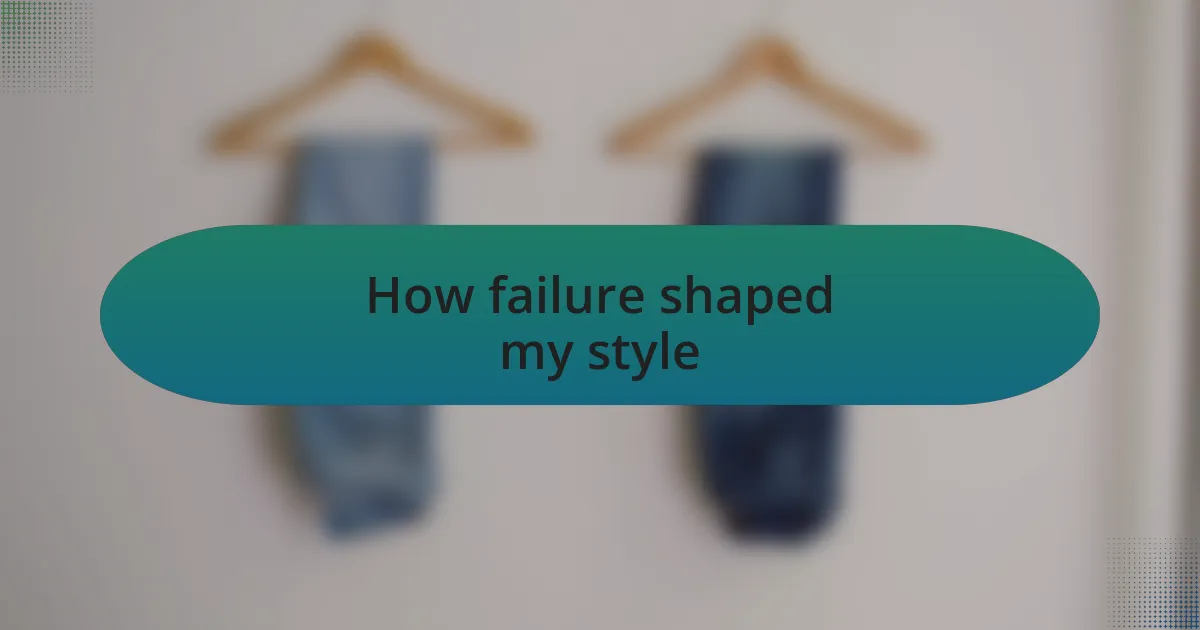
How failure shaped my style
Failure has a curious way of molding my style. I once designed a collection that I thought was a masterpiece, but the feedback was overwhelmingly negative. Instead of spiraling into frustration, I chose to embrace that moment as a turning point. It pushed me to explore what my audience truly wanted, which led to creating pieces that resonated deeply. Have you ever had a moment when feedback became your greatest teacher?
Another time, I miscalculated the color palette for a new line. The colors I loved just didn’t translate well on the fabric. It felt like a gut punch, but it sparked a journey of experimentation with unexpected combinations. This exploration expanded my aesthetic and pushed me to take bolder risks. I’ve learned that sometimes the best designs come from mistakes—we just need to let go of our initial visions.
Interestingly, the evolution of my style has also been an emotional journey. With every setback, I’ve had to confront my insecurities—wondering if I was truly cut out for this industry. Yet, those moments of doubt birthed resilience and authenticity in my designs. I now create with more heart, using each setback as an opportunity to dig deeper into who I am as a designer. Isn’t that what’s at the core of meaningful fashion?
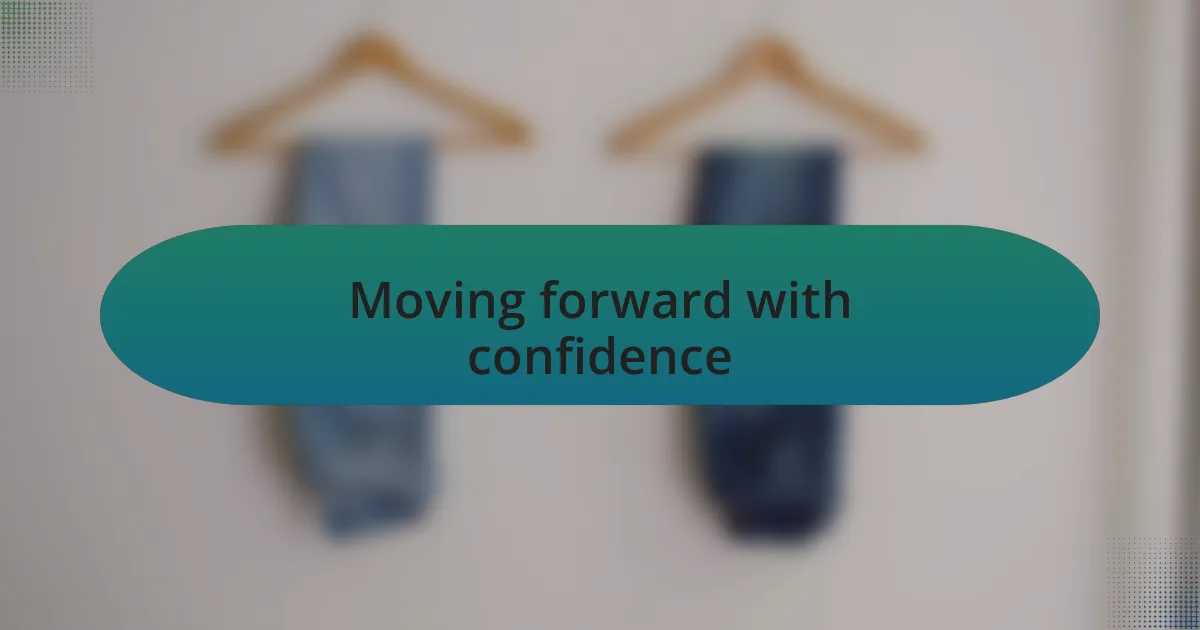
Moving forward with confidence
Moving forward after setbacks can feel daunting, but I’ve discovered that confidence is like a muscle—it grows stronger with use. After an unexpected flop in a fashion show, instead of retreating, I leaned into the discomfort. I started attending more workshops and networking with industry veterans. This shift not only built my confidence but re-ignited my passion for creation. Have you ever found that stepping out of your comfort zone opens new doors?
I vividly remember a time when I showcased a line that didn’t garner the attention I expected. It was disheartening, yet I chose to reframe that experience. I analyzed the aspects that fell flat, rather than dwelling on the disappointment. This analytical approach allowed me to see patterns in my work that needed refining. Each critique became a stepping stone rather than a stumbling block, shedding light on areas where I could evolve. Isn’t it fascinating how much we can learn by simply asking ourselves what went wrong and how we can improve?
In those moments when self-doubt creeps in, I remind myself of the thrill that fashion brings. Reflecting on my journey, it strikes me how resilience has become my steadfast companion. Each failure has gifted me the wisdom to trust my instincts more deeply, to embrace uncertainty as part of the creative process. Hasn’t every designer faced a crossroads where the next step felt risky? By continuing down that path, I’ve learned that confidence isn’t an absence of fear but the courage to keep designing—no matter the roadblocks.